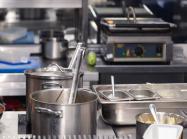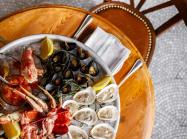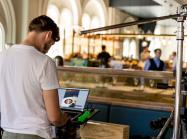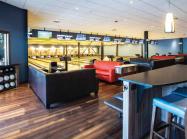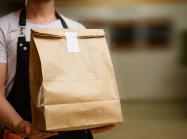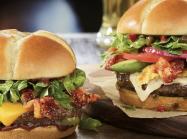The right software can elevate the customer experience.
The dysfunction of third party delivery implies a large risk for most restaurant brands. We simply can’t control off-premise problems once the food leaves our restaurant’s four walls. For those restaurants focused on quality, hospitality and experience, the delivery ecosystem that has developed to date fails to ensure the very things our restaurant brands are built on.
We developed software six years ago for Clustertruck, my vision for a vertically-integrated virtual restaurant and ghost kitchen, which has allowed us to take control of our off-premise delivery business.
The delivery dilemma
Delivery has never truly worked. It’s too expensive. It takes too long. The quality and accuracy aren’t great. And restaurants are struggling to make money with it. Yet, customers want it. Restaurants are in the customer-service business, and it’s our job to figure out how to meet our guests’ demands.
Trying to solve the problems in delivery with a fifteenth piece of software, new shelving, and team member training does not resolve the root cause of the challenge. The root cause? There are too many factors over which restaurants lack control for the operations of the delivery process to succeed. This complex system adds time to the delivery process, and time is the enemy of food quality.
The biggest operational issue with delivery and pick-up has to do with timing. Restaurant operations fail to sync with delivery driver schedules, or vice versa, because they are two separate entities. Restaurant orders are started in the back of the house before there is even a driver secured, which leaves a customer’s food order waiting for anywhere from 5 minutes to a half hour before getting picked up by the driver. In that time, the food sits. Who knows when the delivery driver will show up after the meal is fired? What’s more, there’s no guarantee that pick-up orders sitting on shelves in the front of the house are picked up by the right customer. Someone could take another customer’s order by accident—or even on purpose. In some cases, the driver may never even show up, resulting in a guest who does not receive their meal, and a restaurant that has to throw out a perfectly good meal with no revenue to show for it.
Once the food leaves the restaurant, quality is further challenged. Any mistake made in the kitchen cannot be remedied the same way a server checking on a table could make adjustments. Restaurants cannot control the ambient temperature in the driver’s car, or the angle at which the food is carried. If a driver chooses to “self batch” (operate on two platforms at the same time, picking up several different orders from different restaurants headed to different homes), the time from pickup at the restaurant to delivery at the guest’s door may be even longer than anticipated. The entire system is almost designed to ensure poor quality, off-temperature meals.
Control is critical
The need for delivery is not going away, so there must be a better solution, and the solution must address the enemy of time. If a driver is delivering food 45 minutes after it has been packaged, it’s not going to satisfy the customer’s expectations, or the restaurateur’s for that matter.
The only solution is a vertical solution, one that is designed to instruct kitchens to cook food at a time that’s been coordinated with other food items in the order and driver ability to take the order to its destination. The happy side-effect of this coordination? The driver’s time is also optimized because the cook time of the food is based on the proximity of the driver. In a system this tightly coordinated, both line cooks and delivery drivers are better utilized, which drives up satisfaction for the workers and reduces costs for the restaurants and their guests.
Restaurant general managers and back-of-house expediters are already stressed with the demands of the operation. How are these individuals to keep track of hundreds of orders, each involving multiple meals cooked on different stations, each destined for a different address delivered by a different driver? What seems impossible for humans to do is easy for the right software.
Why this can only be solved with a complete software solution
The era of delivery has presented challenges that many restaurants simply aren’t equipped to handle. I started ClusterTruck as a virtual restaurant and ghost kitchen. Right away I realized that, in order to really be successful with delivery, I had to solve the timing issue. The solution we see being the most effective when it comes to solving the delivery problem of controlled quality of food orders is a purpose-built delivery system using software housed in a dedicated delivery-only facility.
Restaurant operators don't have time to schedule and coordinate delivery. Instead, they need software solutions that can manage it all for them, keeping the consumer, kitchen and delivery drivers in sync.
Here’s what restaurant operators need in a delivery software solution:
- Native first-party ordering. Delivery software should make it easy to have a digital relationship directly between a restaurant and its guests.
- Dedicated driver app. The best delivery software solutions keep the delivery aspect in-house. Focus on keeping drivers busy and in-sync with the kitchen so that food is delivered promptly and at low cost.
- Smart firing. Get a system that offers smart fire times to flag the kitchen staff when it’s time to fire an order. Make sure it coordinates with your kitchen display system (KDS) and expo station.
- End-to-end solution. Choose a delivery software system that takes care of all coordination, including accommodating for busy meal times and long waits. A purpose-built, end-to-end solution will coordinate the consumer ordering, the drivers, and the smart KDS to ensure the most efficient, profitable, low-cost and high-quality product possible.
Software solutions help enable delivery as an integral aspect of restaurant operations—not just an afterthought that’s causing more stress in the kitchen. When operators can rely on a delivery system that works, they can rely on putting out a better product for their customers. And in this era, customer confidence means everything.
Deliver better
If a restaurant is going to incorporate delivery into the brand’s growth plans, operators have to keep control of product quality without placing undue stress on the kitchen team.
The right software solution will help signal staff that food should be cooked as the delivery driver is arriving. No more food sitting out and waiting for pick-up. No more drivers sitting around waiting for food. The right software can save time, improve the working environment for both back-of-house and delivery drivers, and elevate the consumer experience.
Chris Baggott is a software innovator turned restaurateur. He is the founder of ClusterTruck, the largest and most profitable ghost kitchen in America. He also operates Griggsby's Station and The Mug. Seeing the challenges of restaurants first-hand, particularly in dealing with increasing consumer demand for delivery, he and co-founder Dan McFadden created software to power ClusterTruck. That software, Empower Delivery, is now available to all restaurants seeking to control their own delivery destiny.



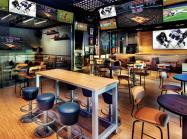
%20(1)_099fe.png)
